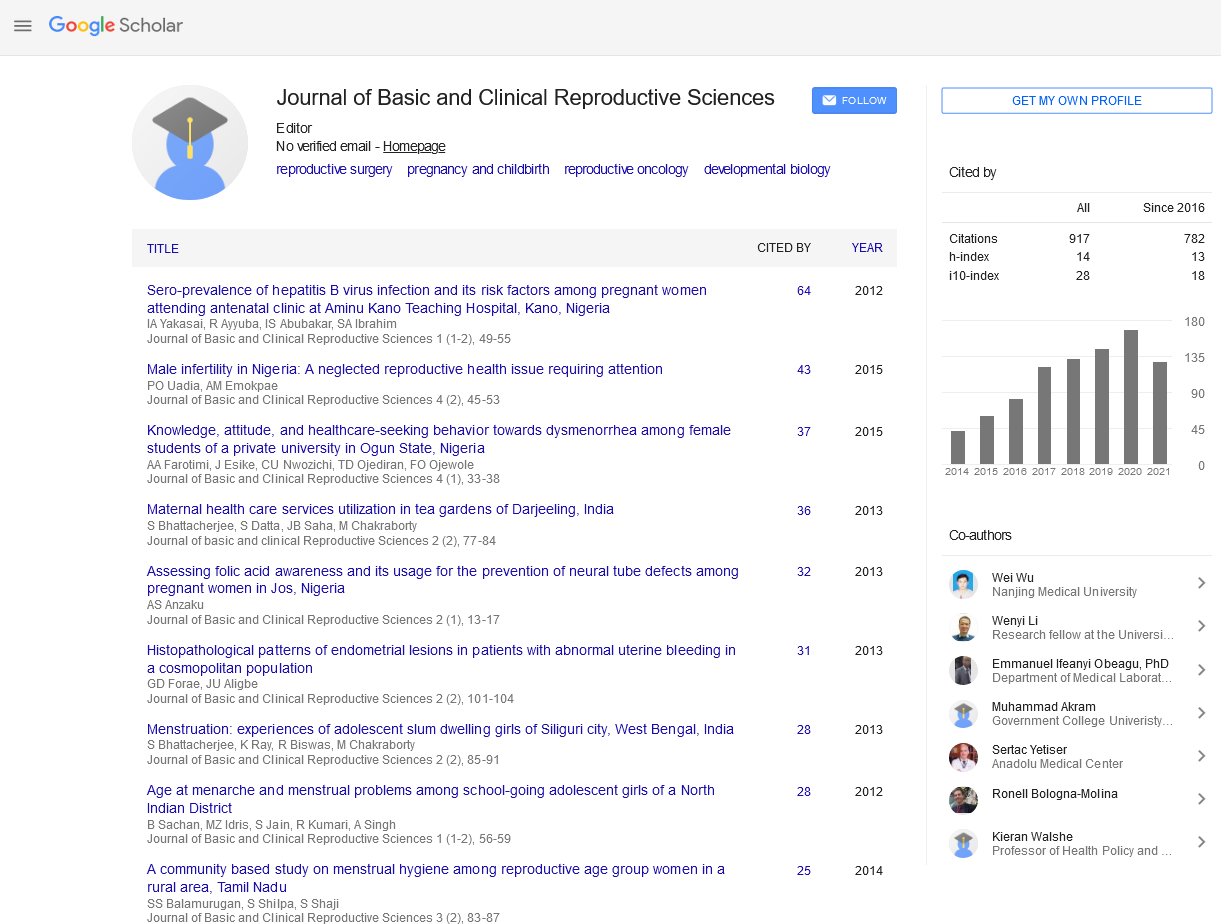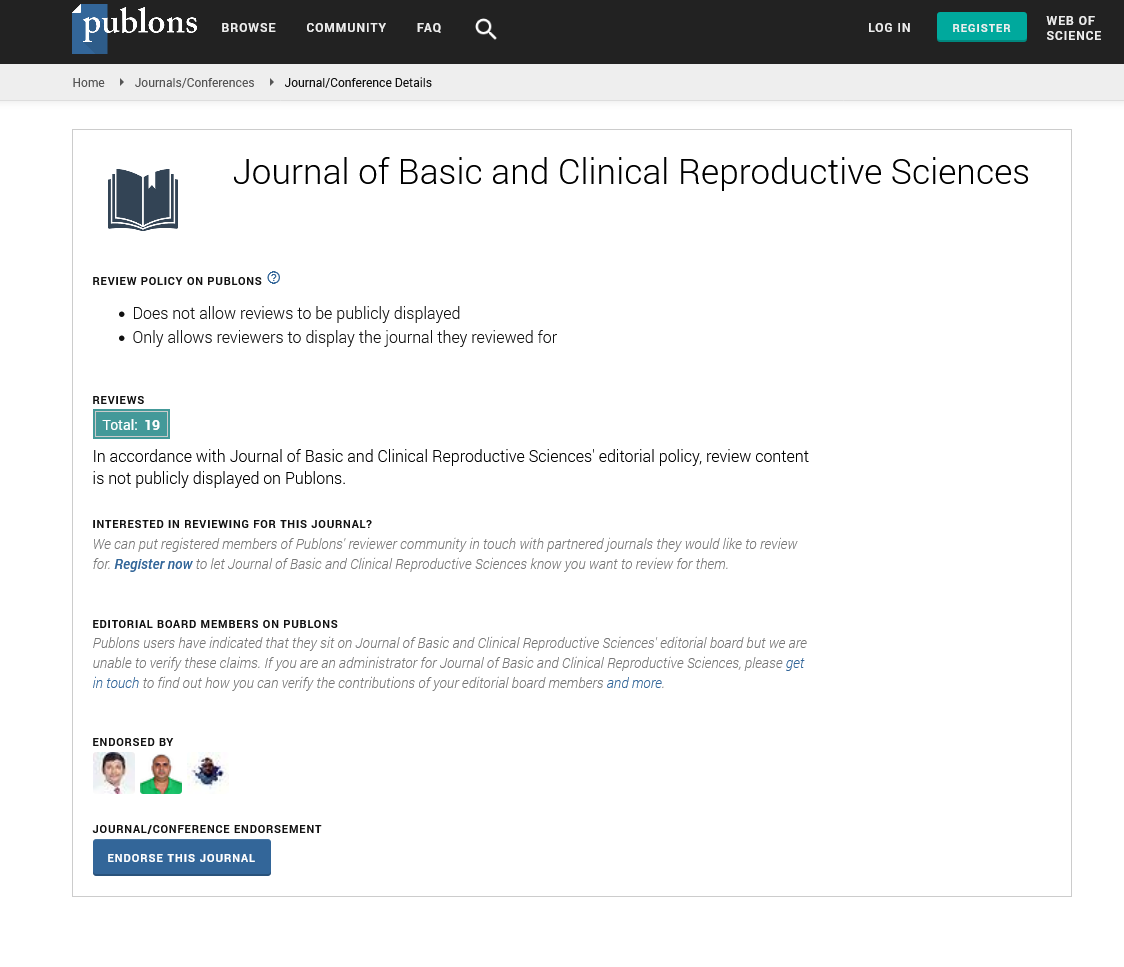Short communication - Journal of Basic and Clinical Reproductive Sciences (2021) Volume 10, Issue 3
Spontaneous OHSS in successful pregnancy following artificial FET cycle: A case report
Received: 15-Mar-2021 Accepted Date: Mar 22, 2021 ; Published: 29-Mar-2021
This open-access article is distributed under the terms of the Creative Commons Attribution Non-Commercial License (CC BY-NC) (http://creativecommons.org/licenses/by-nc/4.0/), which permits reuse, distribution and reproduction of the article, provided that the original work is properly cited and the reuse is restricted to noncommercial purposes. For commercial reuse, contact reprints@pulsus.com
Abstract
Ovarian hyperstimulation syndrome is a disorder associated with exogenous gonadotropin and is an iatrogenic complication of ovulation induction therapy in ART during the luteal phase and or early stages of pregnancy. Severe OHSS is considered a life-threatening condition and occurs in 0.2-1.2% of stimulated cycles. In literature, sporadic cases of spontaneous OHSS have been reported amongst naturallyconceived pregnancies and non-pregnant women with primary hypothyroidism, polycystic ovarian disease, molar pregnancies, pituitary adenomas and in women with Follicle Stimulating Hormone (FSH) receptor mutations. The characteristic pathophysiology of OHSS is due to release of number of vasoactive amines including Vascular Endothelial Growth Factor (VEGF) and other pro-inflammatory factors resulting in increased capillary permeability, leakage of fluid from the vasculature, third space fluid accumulation and intravascular dehydration. Fatal cases are associated with cerebral infarction, pulmonary thromboembolism and massive pulmonary edema. Even though the condition is extremely rare, spontaneous OHSS can be lethal if not timely diagnosed or tend to be mismanaged due to misdiagnosis. We report a case of spontaneous ovarian hyperstimulation syndrome in a 39-year-old woman, pregnant after receiving medicated thawed embryo transfer cycle. Although the onset of OHSS was not until 12 weeks of gestation, the corresponding diagnosis was considered in presence of twin pregnancy characterized by elevated β-hCG levels, bilateral enlarged ovaries, ascites with other physical and biochemical findings suggestive of intravascular depletion.
https://maviyolculuk.online/
https://mavitur.online/
https://marmaristeknekirala.com.tr
https://tekneturumarmaris.com.tr
https://bodrumteknekirala.com.tr
https://gocekteknekirala.com.tr
https://fethiyeteknekirala.com.tr
Biography
Nahla Kazim is a Reproductive Medicine Specialist and currently working in Tawam Fertility Centre, Tawam Hospital, Al Ain. She has completed her PhD in Division of Reproductive Medicine and Developmental Sciences from University of Edinburgh, UK. She has published in several internationally renowned journals and her research interests are Reproductive Endocrinal Disorders and Infertility, Pursue clinical fertility services of PDG and PGS, Right to access Fertility Preservation options and AMH and premature ovarian insufficiency amongst UAE women.


